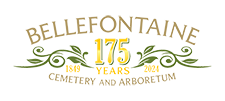Horticulture Supervisor, Kyle Cheesborough

This week is all about hydrangeas. Hydrangeaarborescens, or smooth hydrangea is a lovely native, colonizing shrub that prefers shaded conditions with average soil moisture. Typically growing along stream banks and bluff bases, the smooth hydrangea develops woody stems with attractive peeling bark and will slowly fill an area if allowed to sucker. Up to 6’ high and a bit wider, Hydrangea arborescens can be kept in check with annual pruning to the ground in winter. The ‘lace-cap’ flowers feature small, yellowish-white clusters of fertile flowers, surrounded by much larger, sterile white flowers in early summer, with sporadic blooming into fall. Unlike many of our cultivated varieties, the smooth hydrangea provides pollen for flower-visiting insects and is a host plant for the beautiful hydrangea-sphinx moth.


This is Hydrangea arborescens ‘Incrediball’, a cultivated variety of the native Hydrangea arborescens. Unlike the smooth hydrangea, ‘Incrediball’ features large clusters of only sterile white flowers, often 6” across. The extra-sturdy stems ensure that the plants do not flop over in full bloom, and suckering is not as strong as in the native smooth hydrangea. ‘Incrediball’ prefers shady conditions, but can be grown in full sun under consistent irrigation. This hydrangea is very intolerant of drought, with the leaves shriveling and browning in hot, dry conditions.


Hydrangea arborescens ‘Invincibelle Spirit’, another cultivar of the native Hydrangea arborescens, is a slightly smaller, woody shrub growing to 4’ high and wide, with dusty-pink clusters of sterile flowers. Flower clusters are typically not as large as ‘Incrediball’, but the pink is very unique and quite striking. The buds appear with a pink tint, and open a light shade of pink, eventually aging to a rose color. Also intolerant of drought, this hydrangea can be grown in a variety of conditions, as long as it is well irrigated to provide adequate soil moisture.

Since both ‘Incrediball’ and ‘Invincibelle Spirit’ have been selected for their large clusters of infertile flowers, these shrubs serve little purpose to pollinators, and are not as often visited by the hydrangea-sphinx moth as a larval host. A savvy gardener with an eye for providing pollinator habitat will avoid these cultivars, opting for the native Hydrangea arborescens.
All three varieties of hydrangea featured here can be found in Wildwood Valley Gardens at Bellefontaine Cemetery and Arboretum. Take some time this weekend for a walk through the beauty and solace of one of St. Louis’ most treasured historic spaces.
compiled by Cara L. Crocker

Post a comment